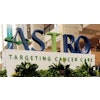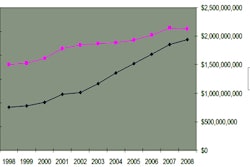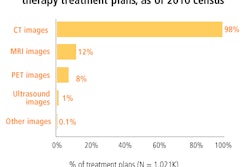Low-dose palliative radiation therapy (RT) delivered in just two sessions is a highly effective treatment for patients with advanced-stage indolent non-Hodgkin's lymphoma, according to an article published online December 16 in the International Journal of Radiation Oncology, Biology, Physics.
The results of this retrospective Canadian study reinforce the clinical appropriateness of a short-course palliative care treatment regime, even for patients with large tumors. Overall, the 54 patients whose outcomes were evaluated achieved an 81% overall response during a median follow-up time of 16 months.
Conventional palliative radiation therapy for advanced stage non-Hodgkin's lymphoma is a course of 20 to 35 Gy, typically scheduled over a four- to seven-week time period. The short-course radiation therapy that was performed at Princess Margaret Hospital in Toronto took place in just two days within a week's time.
The advantages to the hospital's cancer treatment center included reduced cost of treatments and increased use of radiation therapy resources, both with respect to therapy-related modalities and clinical staff involved in administering treatment. The advantages for patients were the convenience of completing treatment within a week, making only two trips to the hospital, and having a lower risk of side effects due to the much lower radiation dose received.
To determine just how effective this treatment was for patients, radiation oncologists from the University of Toronto conducted a retrospective analysis of the outcomes of all non-Hodgkin's lymphoma patients who received low-dose palliative radiation therapy at Princess Margaret Hospital between 2003 and 2007. Fifty-four patients were identified who had 85 anatomical sites treated. More than half of the sites had indolent histology, with the remainder (44%) representing aggressive histology, other histology, and chronic lymphocytic leukemia.
Almost half of the tumor sites targeted achieved a complete response, and an additional 32% had a partial response, according to lead author Elisa Chan, MD, of Princess Margaret Hospital's department of radiation oncology, and colleagues. The median time to any progression was approximately four months, while the median time to local progression was between 19 and 20 months.
The authors reported that tumors larger (42%) and smaller (58%) than 5 cm had similar rates of freedom from local progression, at 42% and 54%, respectively.
Tumors of patients with chronic lymphocytic leukemia demonstrated a lower response to the palliative radiation therapy than other types of tumors. The overall response rate for follicular lymphoma, mucosa-associated lymphoid tissue, and marginal zone lymphoma histology was 88%, compared to a 59% rate for chronic lymphocytic leukemia histology.
By Cynthia E. Keen
AuntMinnie.com staff writer
January 19, 2011
Related Reading
Short, split-dose radiation helps palliate advanced NSCLC, August 9, 2010
Dying cancer patients need shorter palliative radiation therapy, April 12, 2010
Low-dose IFRT works for non-Hodgkin's lymphoma patients, February 11, 2009
Copyright © 2011 AuntMinnie.com



















